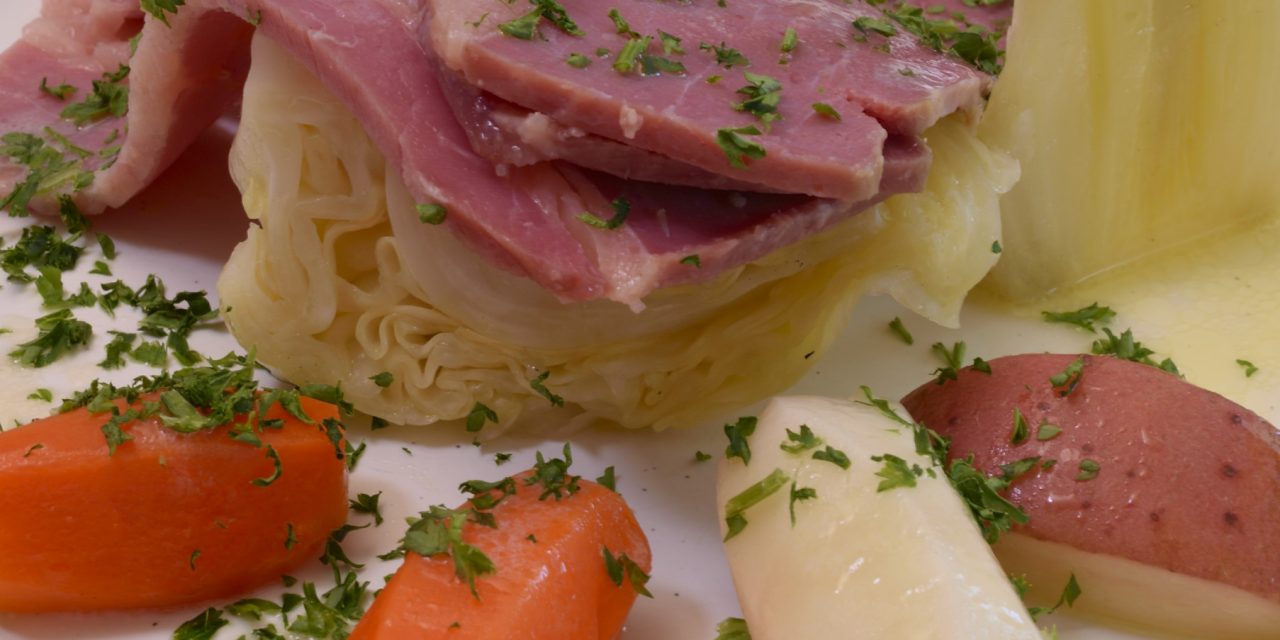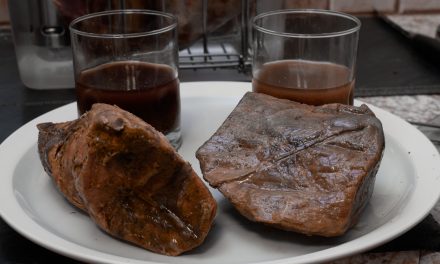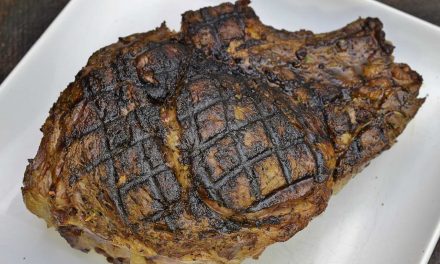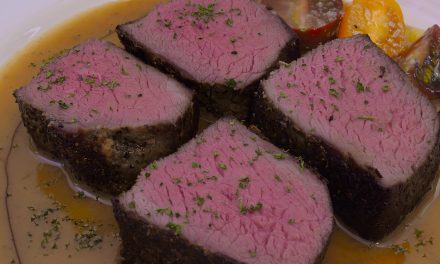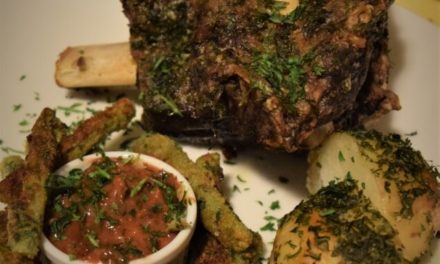Where’s the Corn?
There is no corn in corned beef. I double checked. Simply put, the use of the word “corned” refers to an outdated vocabulary where “corn” referred as much to a shape as a distinct vegetable. Like a peppercorn. We won’t dwell on this.
The fact is, corned beef is made much like what many people in the country call “City Ham.” The meat is thoroughly rubbed with a carefully measured mixture of sodium chloride (salt, NaCl), a tiny, tiny amount of sodium nitrite (NaNO2), and sometimes sugar (CnH2nOn ). I include the chemical formulae for those of us squeamish about the addition of chemicals to our food. As you can see, salt and sugar are no less “chemical” than sodium nitrite. Sodium nitrite is not in the curing formula to poison us. Sodium nitrite is in the curing formula to kill botulism, which WOULD poison us. Sodium nitrite also kills other harmful pathogens, and prevents spoilage as a result of autolysis, too. Large amounts can be toxic to humans, and that is why cure must be carefully measured.
That little envelope.
Traditionally, oregano, coriander, mustard, fennel, ginger, garlic, bay, chiles, nutmeg, etc. were also used in the curing process. These days, you might see a little envelope in the package of raw corned beef at the market. That’s the corn, so to speak. Once the meat had achieved a certain, minimum amount of time in the cure, it was boiled and eaten. So, to that extent, it is kind of like ham. Not all ham is boiled, but City Ham is.
Hundreds of years ago, people didn’t really understand what the active ingredients in cures consisted of, or what they did. After most likely discovering the process by accident, all they really knew was that it worked. After that, they avoided tampering with the recipe. The fact is, none of those spices can penetrate the surface of the meat. We exclude them for curing, and then implement later as flavorings and aroma.
The Cure (I always kinda liked them)
I cured a Painted Hills brisket that I purchased from NickyUSA. I don’t work for either of them, but Painted Hills has good stuff, and Nicky sells it. Curing is not complicated but it takes about a month. It’s really not very practical at home. There are books and products available on the market that explain exactly how to do it, and how much cure to use.
Don’t fake it. It’s very important. If you cure your meat just right, it will come out almost exactly like the purchased stuff. You might save a little money, but don’t expect to.
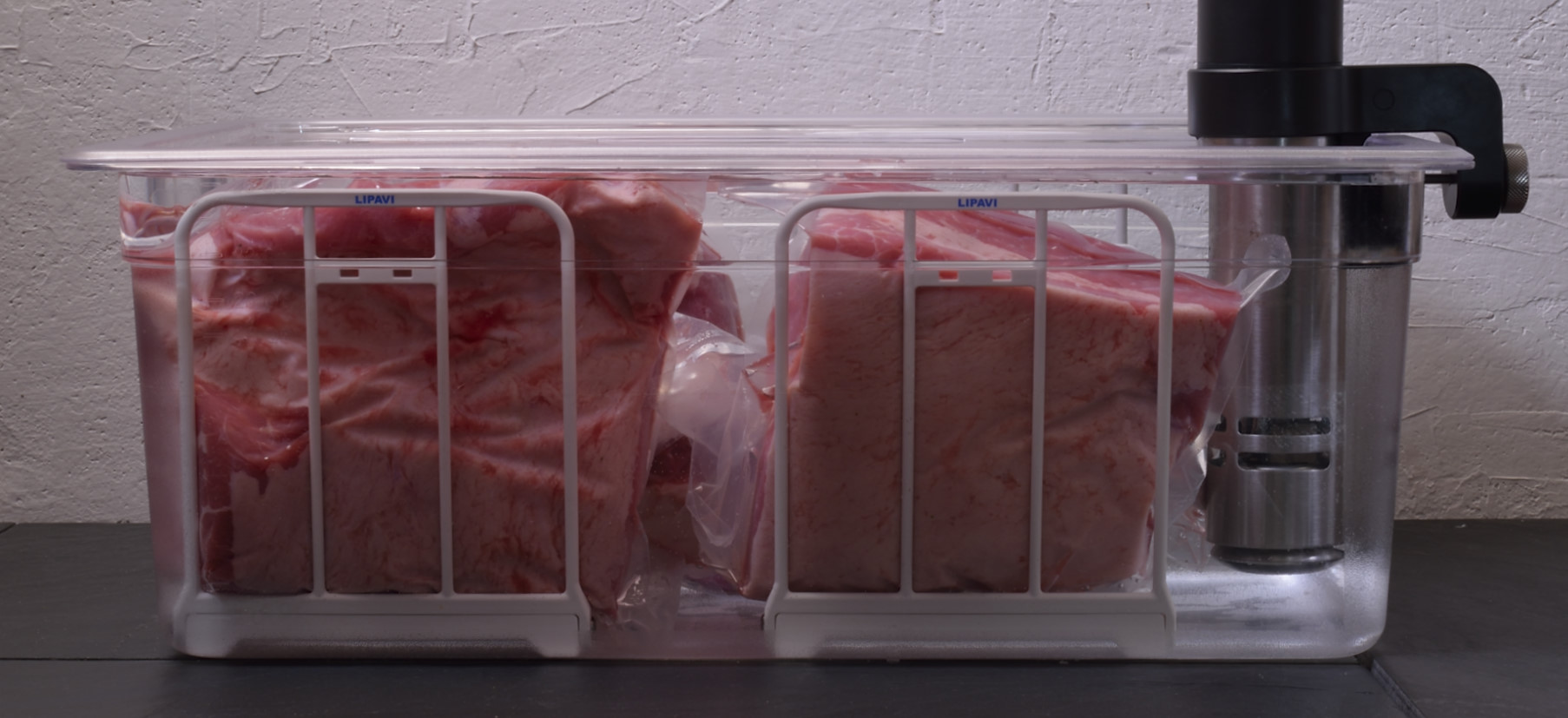
After fully curing, I cut the brisket into three lb pieces and process it @
135 F/57 C X 40-72 hours.
Time determines tenderness, but a clock cannot be used to MEASURE tenderness. Different pieces of meat vary in collagen content, so use THIS to make it all work.
For most people, this is where the procedure begins. But that seems like a long time. It is a long time. But the brisket is one tough piece of meat, cut from what we would call the chest of the animal. Our anatomy is not that different than other animals, but the names are completely different. That may be for the best.
You don’t HAVE to use brisket, top round and bottom round work pretty good, too, and they are leaner. Brisket is commonly used, maybe because people didn’t think it was good for much else. It is though. They will still take at least 48 hours, at that temperature.
Make sure you have butter!
After processing, there is a lot of Sous-Jus in the bag, which we add to the broth described below and clarify. I prefer to remove excess fat now, as opposed to before curing. 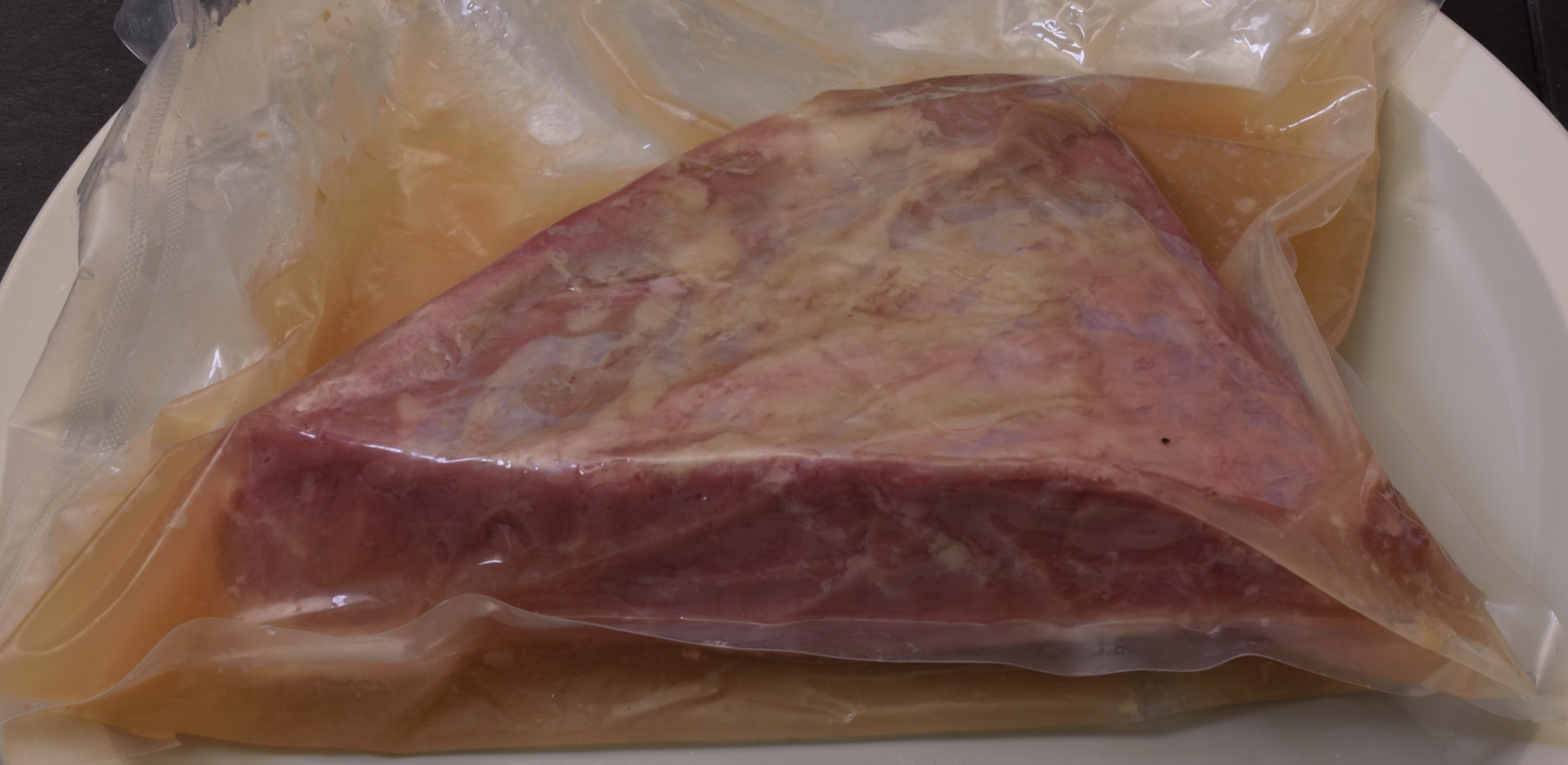
Except for this piece (the tail end of the flat) there is a lot of fat. 40% is not an exaggeration, and there isn’t much you can do with it.
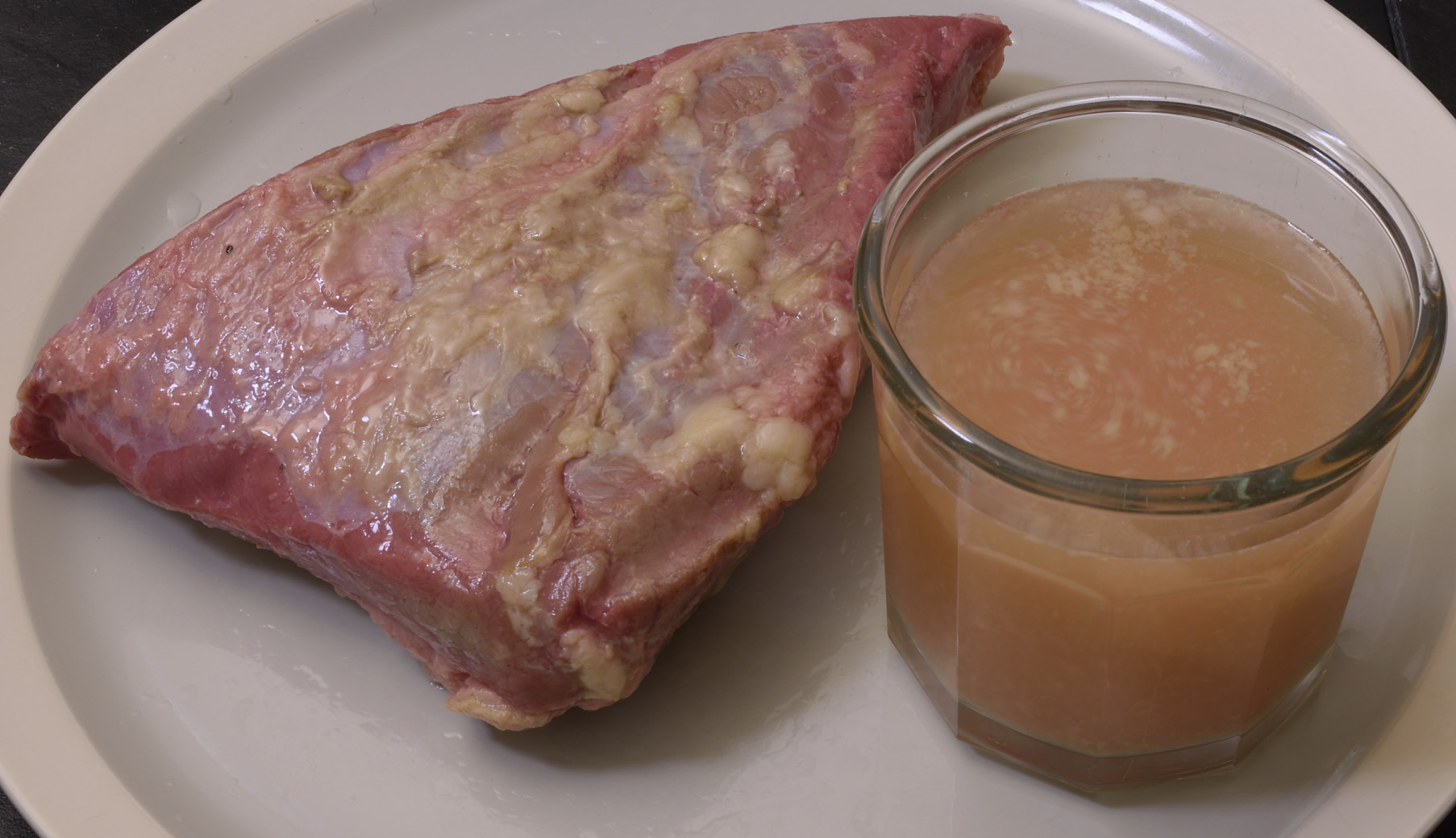
Well, actually, there is, but it’s a lot more work. I just let it go, with a little sigh and a cringe.
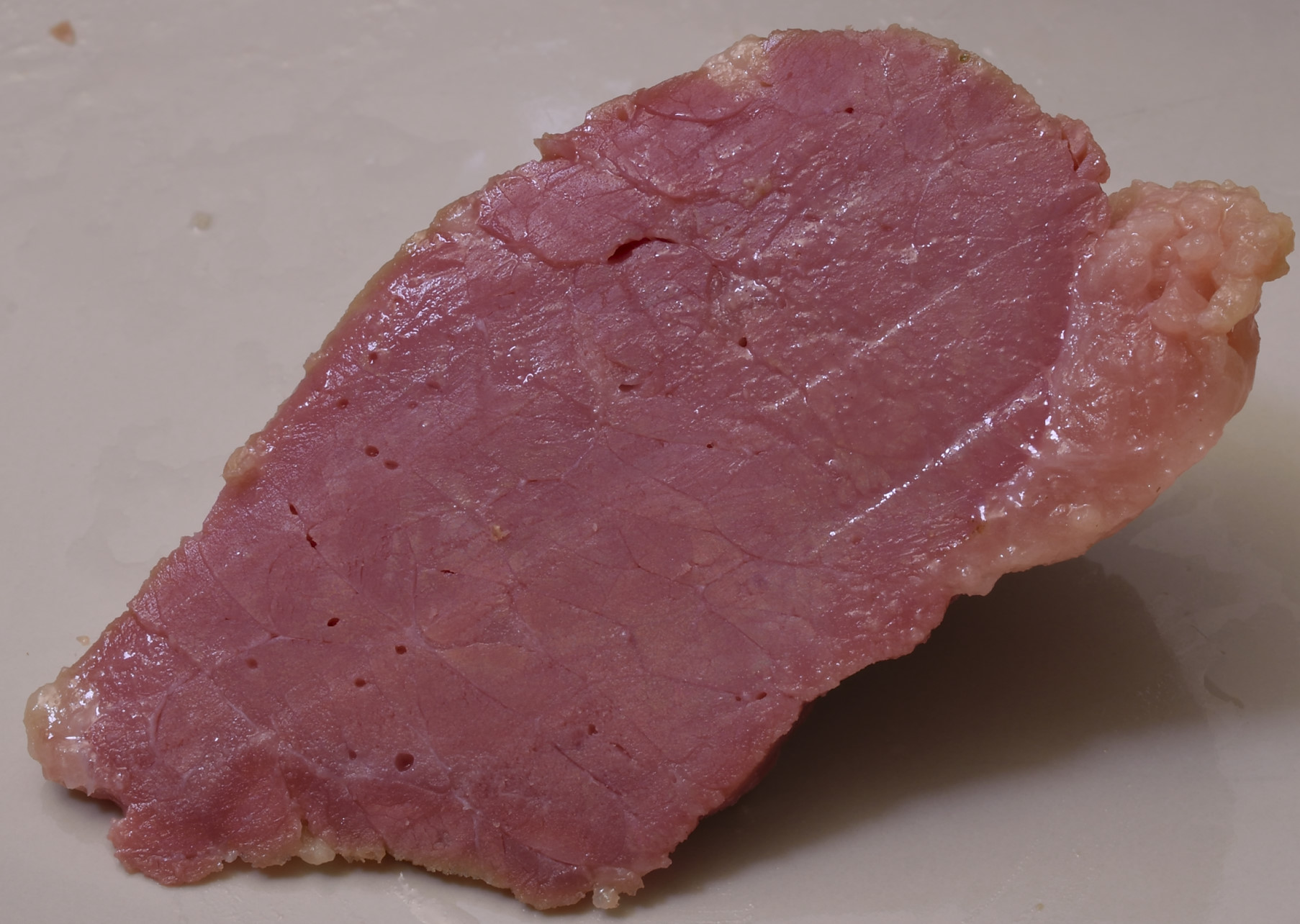
Are we arriving, or departing?
Corned beef is very common in the United States. I hear you hardly ever see it in Ireland, with which it is commonly associated. My friends overseas confirm that it’s pretty much an American thing, which I find funny, because we have so few things that we can really call American. Meat loaf. That hasn’t gotten to Europe yet. I think wings have jumped the pond, though. We could have corned beef all to ourselves. I’m sure the Irish wouldn’t mind.
The cabbage and all that stuff.
Okay, we have three days until the corned beef is ready. This gives us time to prepare all the typical accompaniments, which include, but are not limited to:
- Cabbage
- Potatoes
- Carrots
- Celery
All of these items CAN be prepared on the day of service, but they don’t have to be. That is one of the many beauties of sous vide. All of these vegetables can be processed at least three days ahead. All the vegetables are prepared at the same temperature:
183F/84C
However, there are a few different intervals, depending on the vegetable:
Cabbage: 15 minutes.
Potatoes: 1 hour
Carrots: 1 hour
Celery: 30 minutes
All the vegetables are shown in vacuum bags, but Ziploc bags work just as well. Some vegetables tend to float, but they do not provide the same risk as proteins. Usually they can be weighted, racked, etc. to keep them submerged. After processing, make sure to cold shock them to 70F/21C in iced tap water, and refrigerate at 40F/4C until day of service.
Cut the vegetables into desired shapes.
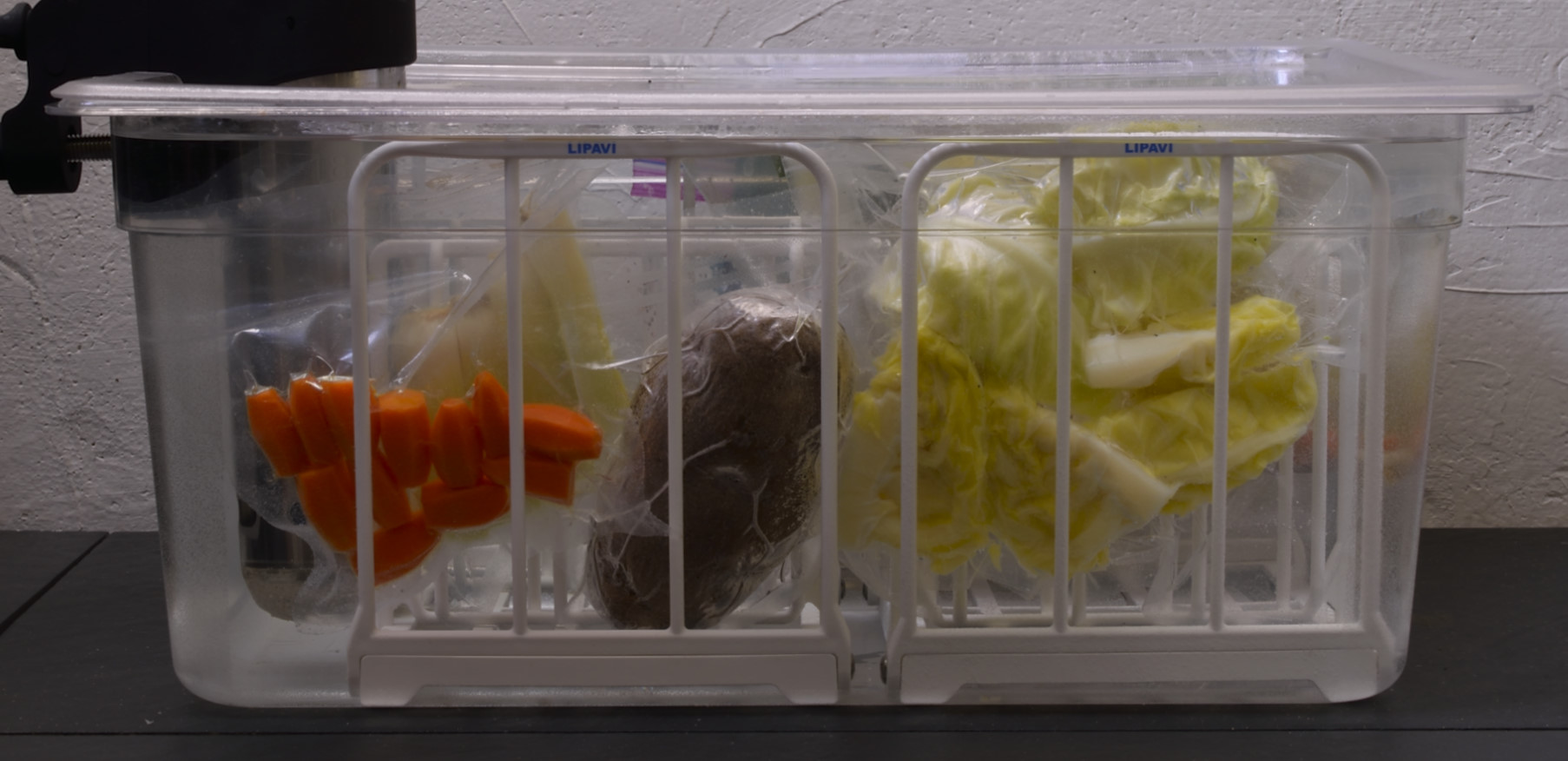
Broth:
This broth can be started any time while the corned beef is being processed. Since the corned beef is sealed in air tight bags, you will be deprived of that awesome aroma that always accompanies it. The characteristics of this broth will linger in the air, and, on the day of service, it will be available for use to flavor your Corned Beef and Cabbage.
Slowly simmer
- Water, 2 quarts/2 liters.
- oregano, 5 g
- corander, 10 g
- mustard 10 g
- fennel 15 grams
- ginger 5g
- garlic 40g
- bay 5g
- chiles 3 g
- nutmeg, ground, 5g
As you prep your celery and onions, the trim can be added to the broth, along with an onion if desired. Do not use trimmings from the cabbage or the potatoes. When you remove the corned beef from the bag, add the juices to this broth. Clarify as explained HERE, and reserve. It should look something like this:
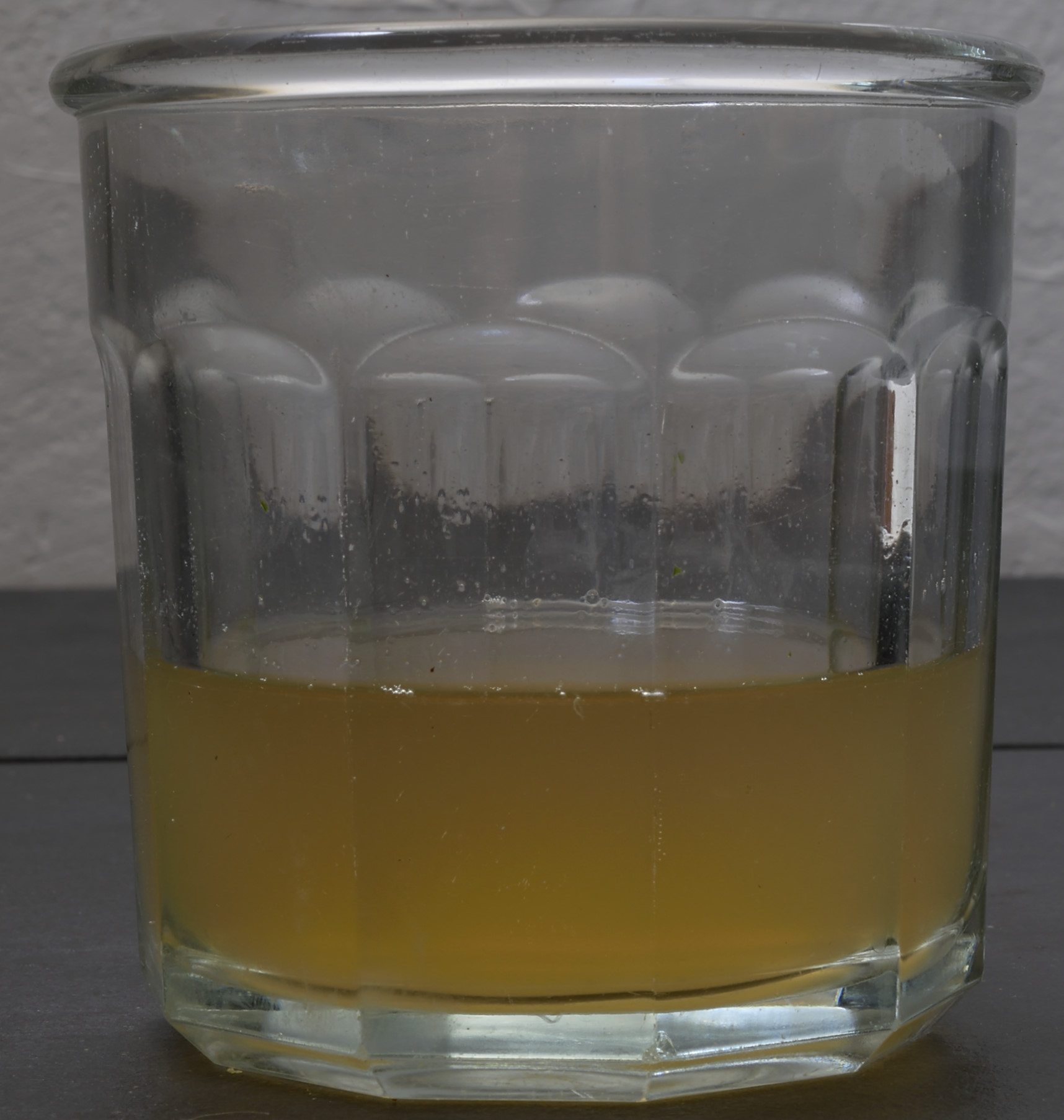
On the day of service, use the recipe linked HERE to make a butter sauce for your entrée.
Set the Table
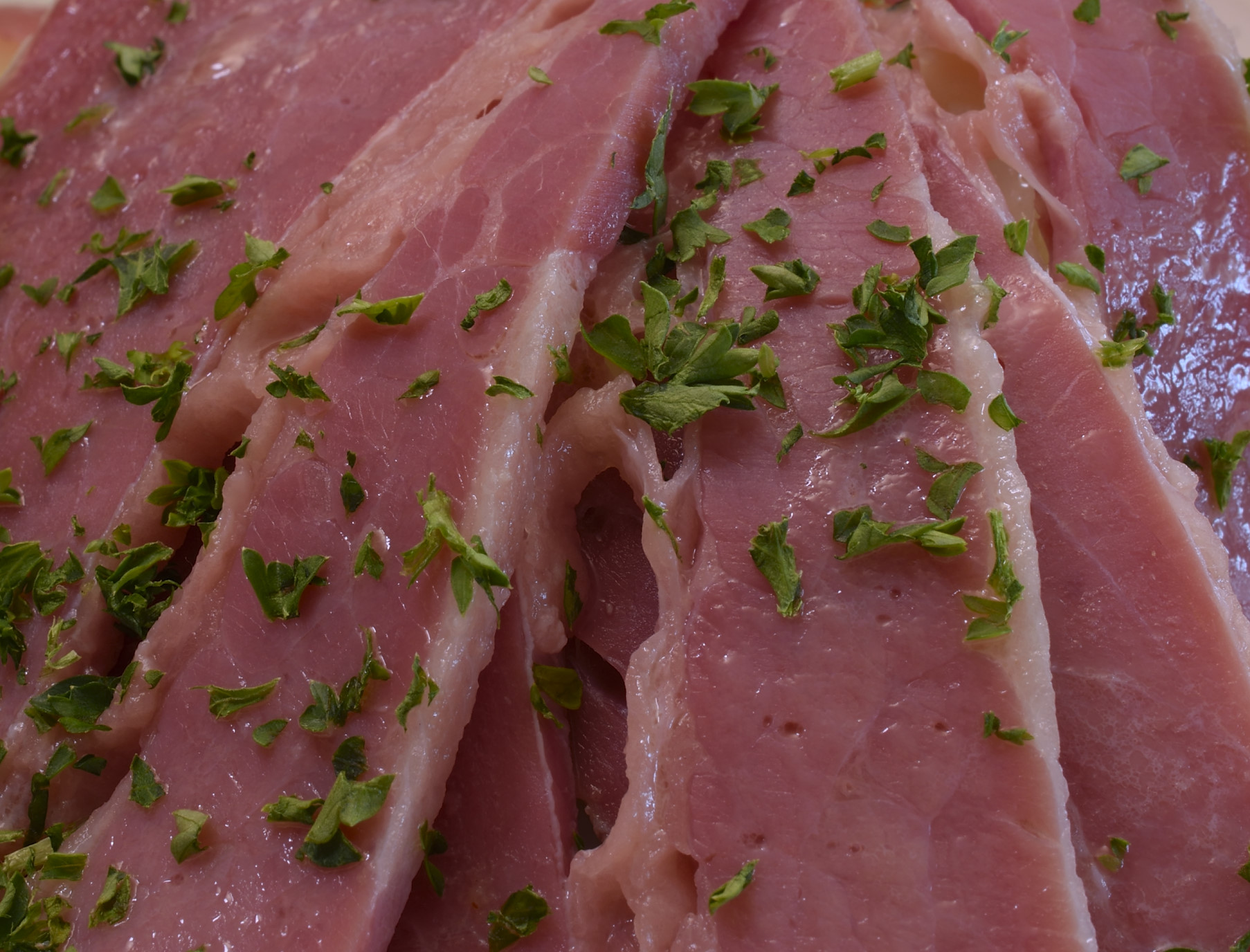
Slice some of your corned beef. If it is hot at this time, you are ready to go. If circumstances dictated that you cold shock it, you can seal it in vacuum or Ziploc and dip in the bath with the vegetables.
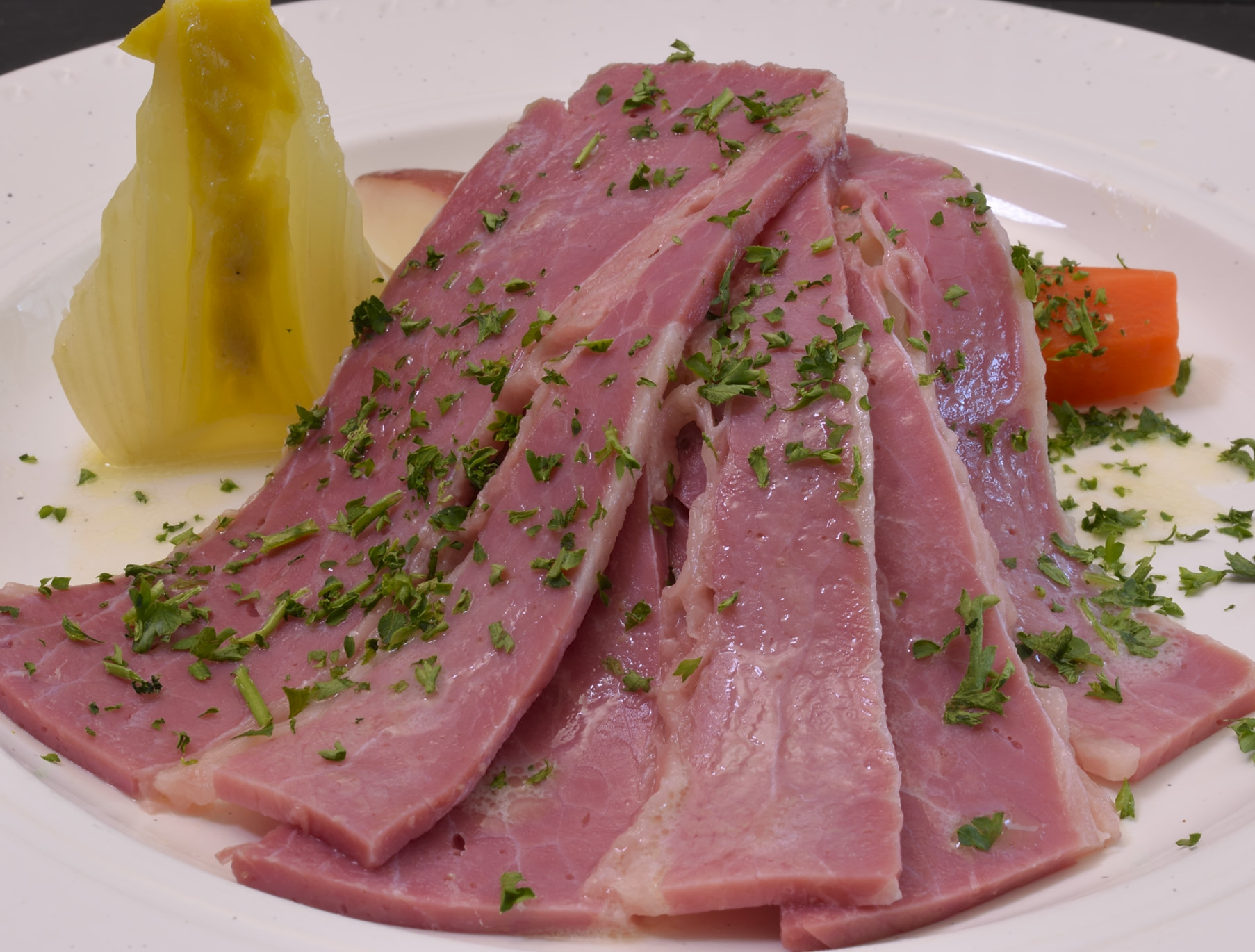
Sprinkle with something Irish green, like chopped parsley or chives.
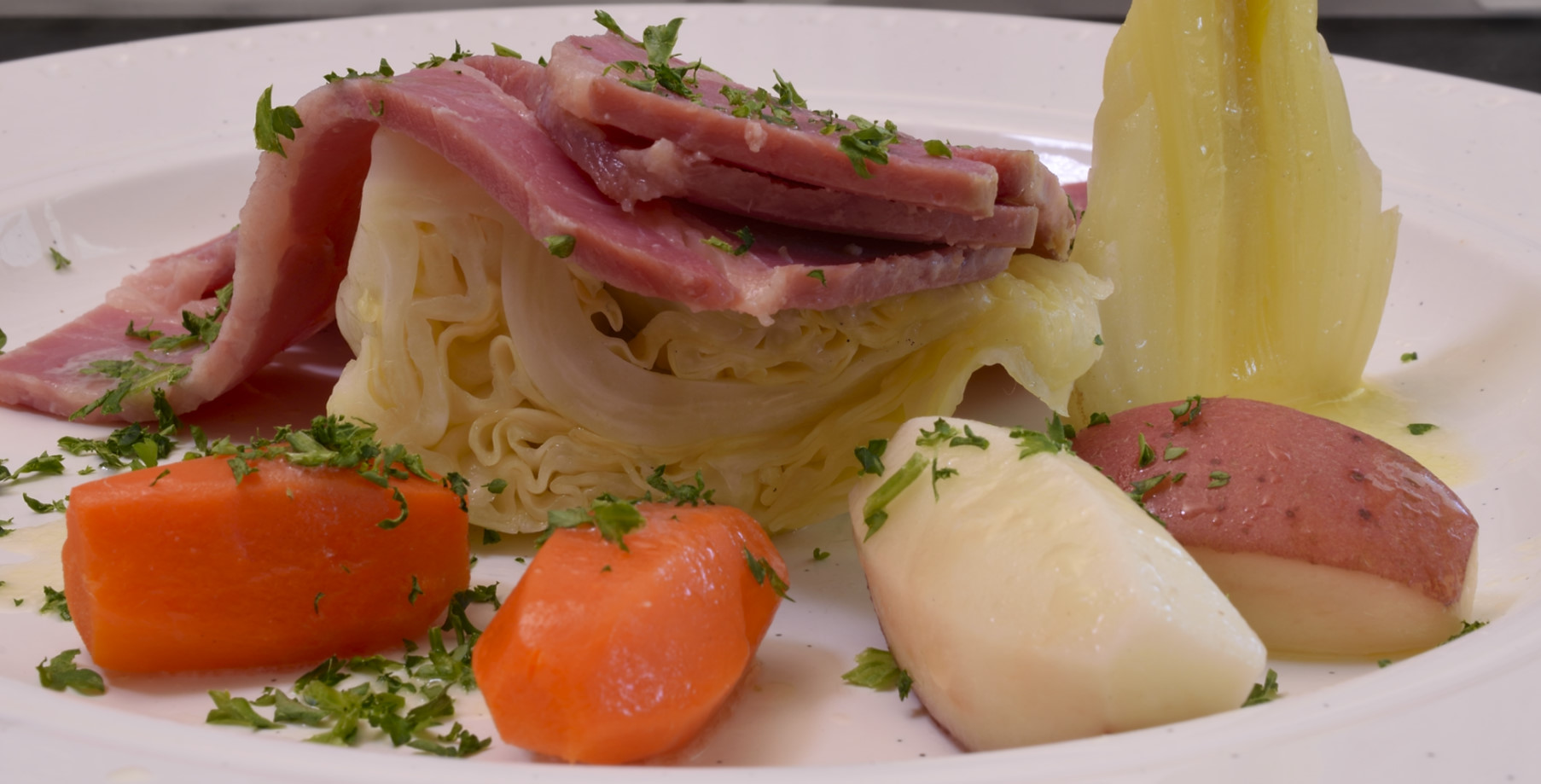
As always, we hope you benefited from this article. Stay tuned, and watch for upcoming alternative treatments of corned beef and pastrami, all sous vide!
Norm

